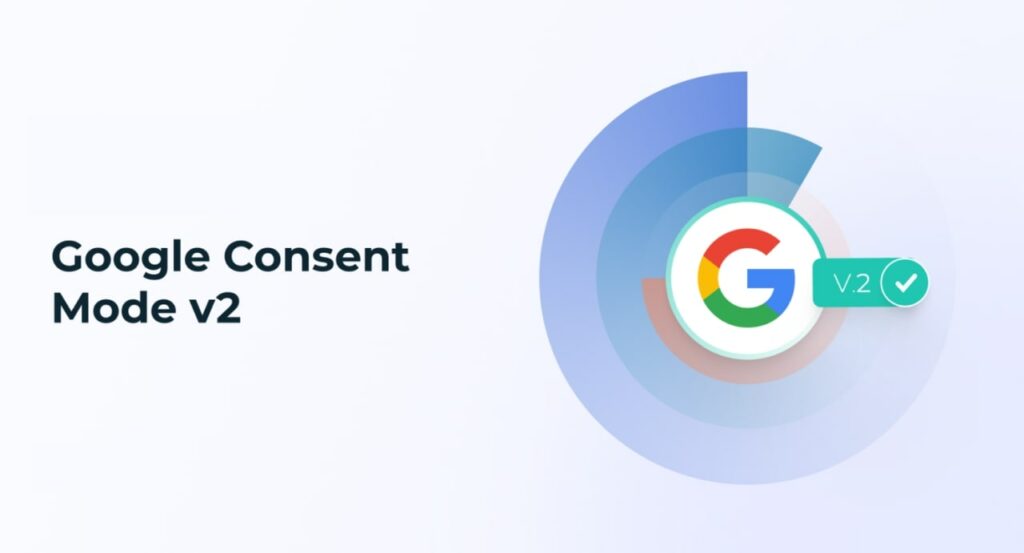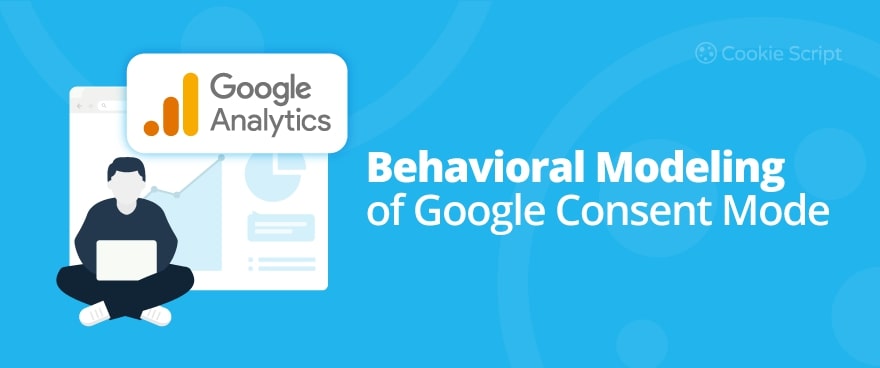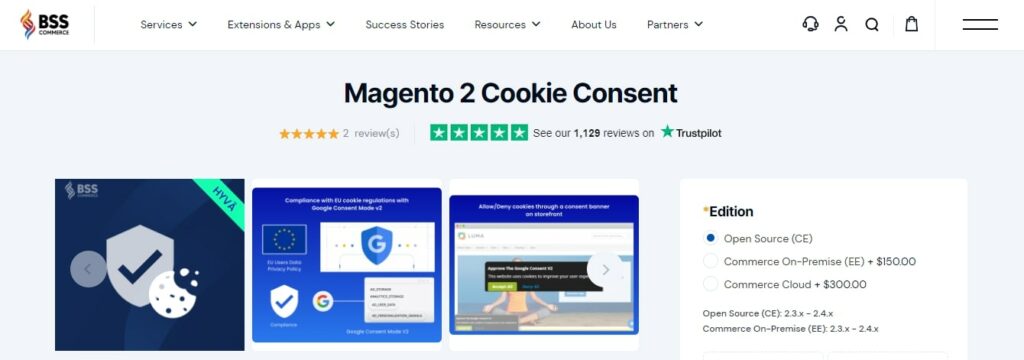Since Consent Mode v2 has rolled out many website owners have seen a huge drop in traffic. Consent Mode was designed to help businesses comply with privacy regulations by adjusting how Google tags behave based on user consent, but it can actually impact data collection and reporting. That’s a big drop! However, understanding why and what to do can help minimize the impact.
In this guide, BSS Commerce will go through the reasons behind the Consent Mode V2 traffic drop and what to do to fix and recover from it so your website keeps performing and stays compliant.
Understanding Data Loss with Google Consent Mode V2
Table of Contents
Google Consent Mode V2 is created to assist website owners in handling user consent for cookies and data collection, especially to comply with privacy regulations. Nevertheless, the implementation of this feature may result in significant data loss, particularly when users decline tracking.

If users opt out of analytics cookies, Google Consent Mode V2 modifies the behavior of Google tags to honor their privacy preferences. Consequently, some data like traffic, user interactions, and conversions might not be tracked, resulting in a decrease in reported analytics data. Here’s what you need to know about data loss with Google Consent Mode V2:
How Data Loss Occurs
- User Consent: When users withhold consent for tracking, Google Consent Mode V2 modifies tag behavior, limiting the data that is gathered. Consequently, certain user interactions may go untracked, creating gaps in your data.
- Tag Behavior: Tags like Google Analytics and Google Ads will function in a consent-conscious manner. For instance, if a user declines analytics cookies, Google Analytics will not capture data for that user’s session.
- Data Anonymization: Even with consent granted, data may be anonymized to comply with privacy regulations, resulting in a decrease in the level of detail of the collected data.
Behavioral Modeling for Consent Mode
When you turn on Consent Mode v2 for the first time, especially if you’re switching to it from not having used the previous version before, you may see a decrease in data. This decrease may cause concern but the duration of this data reduction is temporary or permanent depending on the factors related to GA4’s behavioral modeling.

Consent Mode V2 introduces behavioral modeling to account for data loss when users don’t consent to analytics. By adding a consent banner to your website or app, Analytics will have data gaps for users who opt out of giving consent.
The consent mode’s behavioral modeling uses machine learning to analyze the actions of users who reject analytics cookies, drawing insights from the behavior of comparable users who accept such cookies. This modeled data enables you to extract valuable information from your Analytics reports while upholding your users’ privacy.
However, certain criteria must be satisfied for behavioral modeling to take effect:
- Advanced Consent Mode: Your website must utilize advanced settings, not just basic Consent Mode.
- Adequate Data Volume: Gather a minimum of 1,000 events per day where analytic storage is refused for seven consecutive days.
- Active User Threshold: Maintain at least 1,000 daily users who send events with analytic storage permitted for 7 out of the past 28 days.
Key Reasons for Traffic Drop After Consent Mode v2
This part will explore the main reasons that have led to this decrease, offering a deeper understanding of the difficulties encountered by website owners and marketers in adjusting to the new privacy environment:
#1. Requirements for User Consent
- Explicit Consent: Users need to give explicit consent for tracking cookies when using Google Consent Mode. If they don’t interact with the consent banner or refuse to give consent, Google Analytics won’t track their activity. So only users who have given consent will be tracked, which will result in a big drop in traffic numbers.
- Opt-Outs: Some users will opt out of tracking when given the chance. So you’ll have no visibility into what those users are doing on your website.
#2. Data Recovery Delay
- Machine Learning Adjustment Period: Following the implementation of consent mode, Google’s machine-learning models require a period of adjustment to adapt to the new data collection method. This adjustment period typically lasts between 7 to 20 days, during which there may be a temporary decrease in traffic metrics.
#3. Impact on Conversion Tracking
- Modeling Gaps: Consent mode enables Google to account for discrepancies in conversion data by considering the consent status of users. Nevertheless, this modeling might not promptly offset the absence of direct tracking data, resulting in an initial decrease in reported conversions and traffic.
#4. Challenges with Technical Implementation
- Incorrect Setup: Not setting up consent mode correctly will result in incomplete data collection. Make sure all required tags and consent signals are set up correctly to minimize data loss.
Knowing the reasons for the traffic drop and being proactive will help businesses overcome the challenges of Consent Mode v2 and continue to get valuable insights into their audience behavior.
In the following section, BSS Commerce will show you some solutions to fix the traffic drop after consent mode v2. Your website can fix the traffic drop with these solutions.
Best Strategies to Address the Traffic Drop After Consent Mode v2
It is not uncommon for traffic to decrease after implementing consent mode v2 due to users’ declining cookies. If you notice a significant drop in traffic, it could be a sign that your website was not in compliance with the consent policy previously. As a result, Magento store owners should analyze reports and determine how to measure and evaluate performance based on the current situation.
Don’t worry, in this section, BSS Commerce provides effective strategies to tackle the decrease in traffic following consent mode v2.
#1. Optimize Your Cookie Consent Banner
- Message: Explain what cookies are and how they help the user experience.
- Design & Placement: Make it look good and put it in the right place but not too in your face.
- Options: Give users easy options to accept or customise.
- A/B Testing: Test different versions to see which one gets the most accepts.
#2. Enhance Your Analytics Implementation
- Server-Side Tracking: Track data that gets missed due to consent restrictions on the server side.
- First-Party Data: Collect first-party data from user registrations, surveys and other direct interactions.
- Event Tracking: Track events to understand user behavior even with limited data.
- Data Layer: Use a data layer to make sure all the relevant information is captured and sent to your analytics tools.
#3. User Experience and Transparency
- User Education: Educate users about the benefits of accepting cookies and how it will improve their experience.
- Transparency: Be transparent about what data is being collected and how it will be used.
- Privacy Policy: Keep your privacy policy up to date and easy to find.
- Feedback Mechanism: Give users a way to give feedback on their consent experience and make changes based on that.
#4. Use Alternative Tools
- Consent Management Platforms (CMPs): Use CMPs to manage consents and be compliant.
- Privacy-Focused Analytics: Consider using privacy-focused analytics that don’t use cookies.
- Tag Management Systems: Use tag management systems to control and deploy tags based on consent.
- Heatmaps and Session Recordings: Use heatmaps and session recordings to understand user behavior without cookies.
Bonus tips: Double check your projections using Google Search Console or consider using a different analytics tool that prioritizes privacy. For example, Piwik Pro or Microsoft Clarity are known for being privacy-focused, like Universal Analytics.
#5. Using Cookie Consent Extension
One of the other best strategies to handle consent mode v2 traffic drop is using the Cookie Consent Extension. Rest assured! BSS Commerce’s Cookie Consent for Magento 2 extension with GeoIp feature, which is necessary to enable Google Consent Mode v2 and implement a consent bar on the storefront, allowing your customers to easily accept or deny cookies.
A quick overview of this Magento plugin:
- Review: 100% positive
- Only: $59 per one-time payment
- Version update: Hyva theme compatible v1.0.1 (Jul 24, 2024)
- Compatible with Magento 2.4.7
- Compatible with the Hyva Theme and Hyva Checkout
- Open Source (CE): 2.3.x – 2.4.x
- Commerce On-Premise (EE): 2.3.x – 2.4.x
BSS Commerce’s Magento 2 Cookie Compliance extension, also known as Advanced Cookie Notice, is a module to help you comply with EU User Data Privacy Policy. This plugin allows you to customize the cookie consent bar on your website. Magento store owners use this bar to ask for explicit consent to collect and store visitors’ cookies, especially with Google Consent Mode v2 for personalized ads and analytics.

Highlight Features for Consent Mode V2
1. Enhanced Analytics and Insights
- Analyze how users interact with your cookie consent notifications and gather insights into their preferences
- Collect consented cookies for Google Analytics tools, Google Tag Manager, and business marketing such as Google Ads
- Establish default logic for cookie collection when users do not interact with the consent bar
2. Improve user experience with cookie banners
- Present a cookie notification popup/bar on the main store to request visitors for cookie consent
- Allow customers to agree to website cookie usage
- Customize the content, appearance & positions of the cookie consent bar as desired
- Automatically hide messages after X seconds if there is no interaction
3. Compliance with Privacy Regulations
- Aid in adhering to the EU’s User Consent Policy
- Support Google Consent Mode v2 for Magento 2
4. New updates:
- Integration with GeoIP to display cookie consent banner for specific regions/countries
- Add a link on the website to display the Cookie Banner again for customers to reconfirm their consent.
Website owners can minimize the impact of Consent Mode v2 on traffic and keep valuable insights into user behavior. So, continuous monitoring, adaptation, and investment in data management infrastructure is a must in this ever-changing privacy landscape.
Final Words – Consent Mode V2 Traffic Drop
Thanks to understanding the main reasons for the consent mode v2 traffic drop and taking these strategies, you can effectively manage the impact of the Google Consent Mode v2 and drop traffic and guarantee more precise data collection.
BSS Commerce is a reliable and professional developer. We are committed to providing support, helping you to activate this Google Consent Mode v2, and setting up a consent bar at the storefront for your customers to accept/deny cookies effortlessly. Hence, to ensure the continuous collection of sufficient data, take into account using our Consent Mode v2 extension. This extension enables Google to fill in the data gaps in analytics and ad conversion reports in cases where users decline cookies.
For any inquiries or issues regarding your Magento store, please don’t hesitate to get in touch with us. Our committed support team is ready to help you at any time. Thank you for reading!

